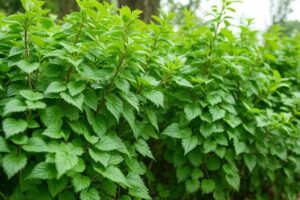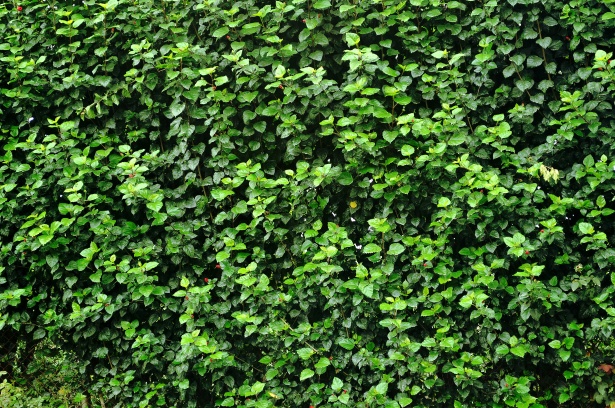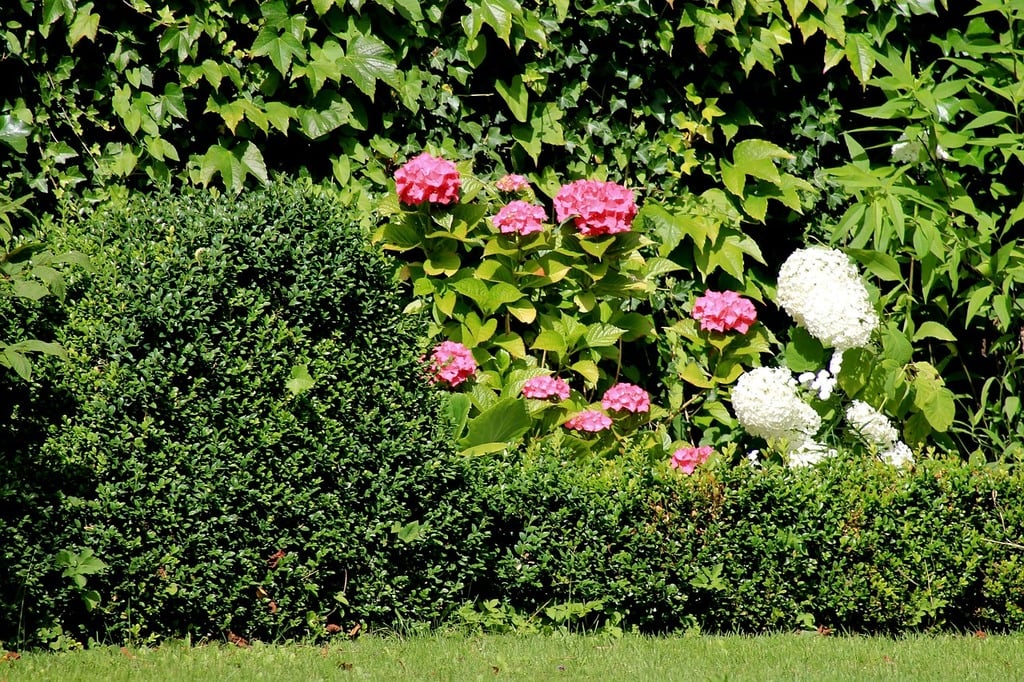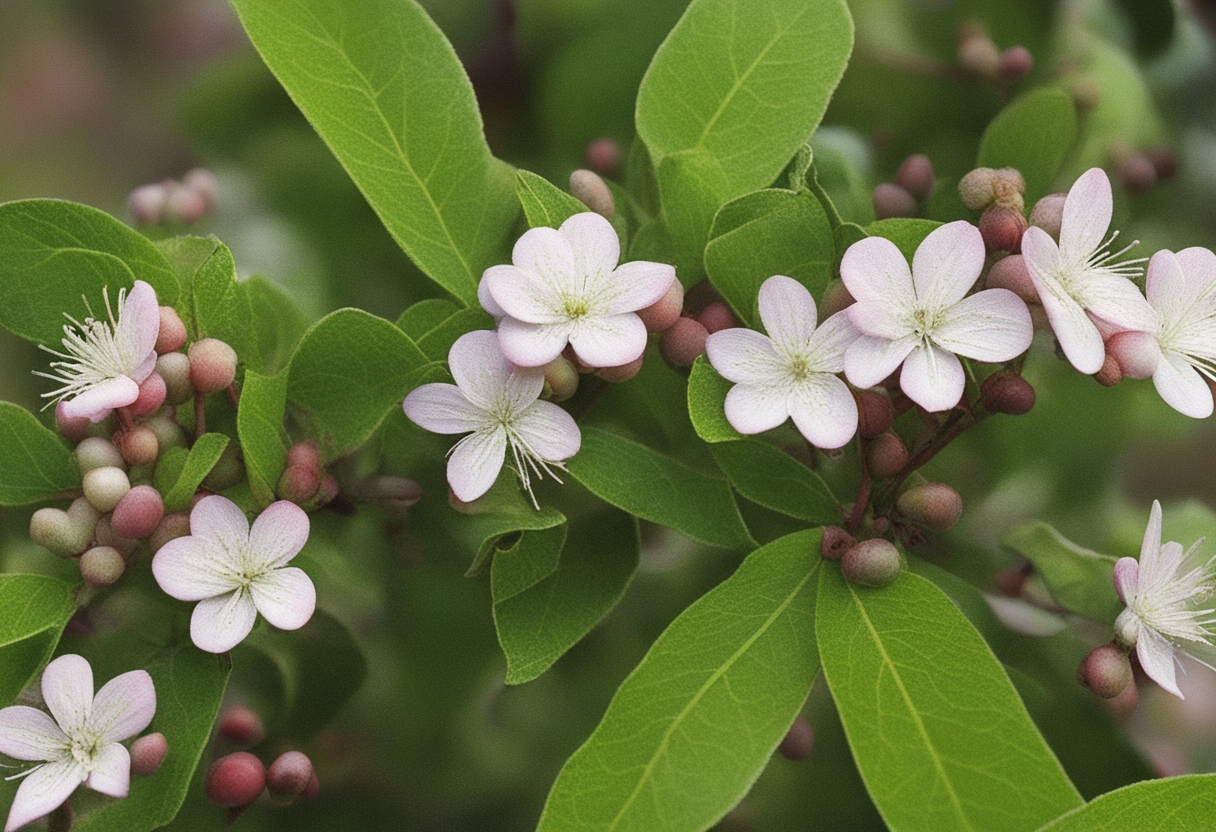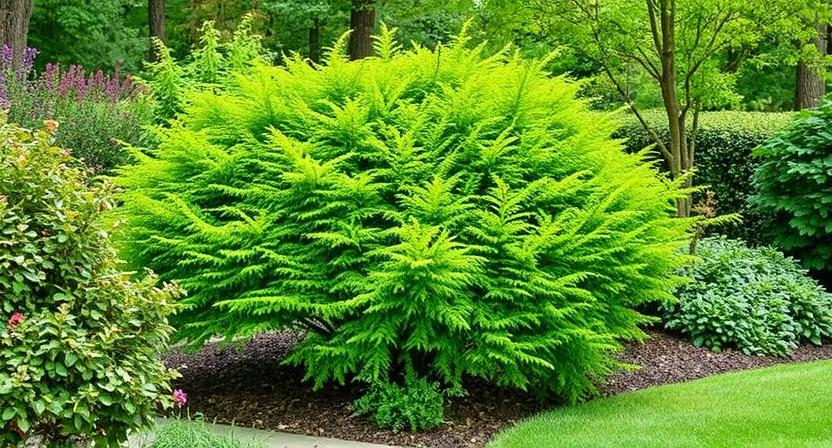Understanding the Purpose of a Shrub Border

A shrub border can serve many purposes in a garden or landscape. One of the main functions of a shrub border is to create a natural boundary or edge. By strategically placing shrubs along the perimeter of a garden, you can define the space and create a sense of enclosure. This not only adds visual interest but also provides privacy and protection from the elements. Additionally, a well-planned shrub border can act as a buffer zone, helping to reduce noise and block out unwanted views.
Another purpose of a shrub border is to provide structure and form to a garden. The different heights, shapes, and colors of the shrubs can create a visually appealing backdrop for other plants, such as flowers or ornamental grasses. The varying textures of the shrub foliage add depth and interest to the overall landscape design. Moreover, a shrub border can serve as a foundation for other garden features, such as trellises or vertical accents, enhancing the overall aesthetic appeal of the space.
• A shrub border creates a natural boundary or edge, defining the space and creating a sense of enclosure.
• It adds visual interest to the garden and provides privacy and protection from the elements.
• The strategic placement of shrubs in a border can act as a buffer zone, reducing noise and blocking out unwanted views.
• The different heights, shapes, and colors of shrubs create structure and form in the garden.
• The backdrop created by the shrub border enhances other plants like flowers or ornamental grasses.
• The varying textures of shrub foliage add depth and interest to the overall landscape design.
• A well-planned shrub border can serve as a foundation for other garden features such as trellises or vertical accents.
Assessing the Site and Climate for Your Shrub Border
When it comes to creating a successful shrub border, assessing the site and climate is crucial. The site conditions will directly impact the growth and overall health of your shrubs, so it’s important to take a close look at the characteristics of the area. Start by evaluating the amount of sunlight the site receives throughout the day. Some shrubs thrive in full sun, while others prefer partial shade. Understanding the sun exposure will help you choose the right varieties for your border. Additionally, assess the soil type and drainage. Different shrubs have different soil preferences, so it’s essential to ensure that the soil conditions are suitable for your chosen varieties. Proper drainage is also important to prevent waterlogging and root rot. By carefully assessing the site, you can ensure that your shrub border has the best chance of flourishing.
In addition to site conditions, it’s crucial to consider the climate of your region when selecting shrubs for your border. Some shrubs are better suited for cold climates, while others thrive in warmer regions. Understanding the climate will help you select shrub varieties that are adapted to the temperature range and weather patterns of your area. Consider factors such as average annual rainfall, frost dates, and temperature extremes. By choosing shrubs that are well-suited to your climate, you can create a more successful and sustainable shrub border that will thrive year after year. Assessing both the site and climate will ultimately guide your decision-making process and set the foundation for a beautiful and thriving shrub border.
• Evaluate the amount of sunlight the site receives throughout the day
• Determine if shrubs prefer full sun or partial shade
• Assess the soil type and drainage to ensure it is suitable for your chosen varieties
• Consider factors such as average annual rainfall, frost dates, and temperature extremes in your region
• Choose shrub varieties that are well-adapted to the climate of your area
• Create a more successful and sustainable shrub border by selecting plants suited to your site and climate conditions
Selecting the Right Shrub Varieties for Your Border
When selecting shrub varieties for your border, it is important to consider several factors to ensure their successful growth and compatibility with your overall landscape design. Firstly, assess the available space in your border and determine the desired height and spread of the shrubs. This will help you choose varieties that won’t outgrow the available space and maintain a balanced appearance in your border.
Secondly, consider the soil and climate conditions of your garden. Different shrub varieties have varying tolerance to different soil types and climate conditions. Some shrubs thrive in acidic soil, while others prefer alkaline soil. Additionally, certain shrubs are more suitable for sunny areas, while others can tolerate shade or partial shade. Understanding these requirements will help you select shrub varieties that will thrive in your specific garden conditions.
Lastly, take aesthetic considerations into account when choosing shrub varieties for your border. Consider the overall theme or style you want to achieve, as well as the colors, textures, and flowering times of the shrubs. Mixing different varieties can create a visually appealing border with continuous blooms throughout the year or a striking combination of foliage textures. By carefully selecting shrub varieties that meet the practical and aesthetic requirements of your border, you can create a stunning and harmonious landscape feature.
• Assess the available space in your border and determine the desired height and spread of the shrubs.
• Consider the soil and climate conditions of your garden, as different shrub varieties have varying tolerance to different soil types and climate conditions.
• Take into account aesthetic considerations such as overall theme or style, colors, textures, and flowering times of the shrubs.
• Mix different varieties to create a visually appealing border with continuous blooms throughout the year or a striking combination of foliage textures.
Planning the Layout and Design of Your Shrub Border

The layout and design of your shrub border play a crucial role in its overall aesthetic appeal and functionality. When planning the layout, it is important to consider factors such as the available space, the desired height and width of the shrubs, and the overall style you want to achieve.
One common approach to layout design is to arrange the shrubs in a staggered pattern, with taller varieties placed towards the back and smaller ones towards the front. This creates a visually pleasing layered effect and allows for better visibility of all the plants. Additionally, consider incorporating curves or gentle bends in the border to create a more natural and flowing look.
• Arrange the shrubs in a staggered pattern, with taller varieties towards the back and smaller ones towards the front
• Create a visually pleasing layered effect by varying the heights of the shrubs
• Incorporate curves or gentle bends in the border for a more natural and flowing look
Preparing the Soil for Planting Your Shrubs
Before planting shrubs in your border, it is essential to properly prepare the soil to create an optimal growing environment. The first step in preparing the soil is to remove any existing weeds or grass from the area. These unwanted plants compete for nutrients and can hinder the growth of your shrubs. You can use a garden fork or a shovel to loosen the soil and carefully remove any weeds by their roots. Be thorough to prevent regrowth and ensure the best start for your shrubs.
Once the area is clear of weeds, it is time to assess the soil’s quality and make any necessary amendments. Consider factors such as drainage, pH levels, and nutrient content. You can perform a simple soil test using a kit available at most garden centers or consult with a local gardening expert for more accurate results. Based on the test results, you may need to adjust the soil by adding organic matter, such as compost or well-rotted manure, to improve its structure and fertility. A well-prepared soil gives your shrubs a solid foundation for healthy root development and vigorous growth.
• Remove any existing weeds or grass from the area using a garden fork or shovel
• Ensure thorough removal of weeds by their roots to prevent regrowth
• Assess the soil’s quality, including factors like drainage, pH levels, and nutrient content
• Perform a simple soil test using a kit available at most garden centers for accurate results
• Consult with a local gardening expert for more precise recommendations on soil amendments
• Adjust the soil by adding organic matter such as compost or well-rotted manure to improve its structure and fertility
• A well-prepared soil provides a solid foundation for healthy root development and vigorous growth of shrubs
Proper Planting Techniques for Your Shrub Border
When it comes to planting shrubs in your border, it’s crucial to follow proper techniques to ensure their successful establishment and growth. Start by preparing the soil, ensuring it is loose, well-draining, and enriched with organic matter. Remove any weeds or grass in the planting area to minimize competition for water and nutrients.
Next, dig a hole that is wide and deep enough to accommodate the shrub’s root ball. Place the shrub in the hole, making sure it sits at the same level it was planted in the nursery or container. Backfill the hole with soil, gently firming it around the roots to eliminate air pockets. Finally, water the shrub thoroughly to settle the soil and provide initial hydration. Remember to water regularly during the first few weeks of planting to help the shrub establish itself in its new home.
• Prepare the soil by ensuring it is loose, well-draining, and enriched with organic matter.
• Remove any weeds or grass in the planting area to minimize competition for water and nutrients.
• Dig a hole that is wide and deep enough to accommodate the shrub’s root ball.
• Place the shrub in the hole at the same level it was planted in the nursery or container.
• Backfill the hole with soil, gently firming it around the roots to eliminate air pockets.
• Water the shrub thoroughly after planting to settle the soil and provide initial hydration.
• Remember to water regularly during the first few weeks of planting to help establish its new home.
Establishing a Maintenance Routine for Your Shrub Border

To ensure the long-term health and vitality of your shrub border, establishing a regular maintenance routine is essential. Regular maintenance not only keeps your shrubs looking neat and attractive but also helps prevent the spread of diseases and pests. Here are a few key tasks to include in your maintenance routine.
Firstly, pruning is an important aspect of shrub border maintenance. It helps maintain the shape and size of your shrubs, promotes healthy growth, and improves airflow and sunlight penetration. Regularly inspect your shrubs for any dead, damaged, or crossing branches, and remove them using sharp, clean pruning tools. It is best to prune your shrubs when they are dormant, usually in late winter or early spring, before new growth begins. Avoid pruning during hot summer months, as this can stress the plants.
Secondly, watering your shrubs correctly is crucial for their overall health. While established shrubs are generally more drought-tolerant, they still require proper hydration, especially during dry spells. Deep watering is recommended to encourage deep root growth. A thorough watering once or twice a week, ensuring the water reaches the root zone of the shrubs, is usually sufficient. However, it is important to adjust the frequency and duration of watering based on weather conditions and the specific needs of each shrub variety. Regularly monitor the moisture level of the soil and aim to keep it consistently moist, but not waterlogged.
• Regularly inspect shrubs for dead, damaged, or crossing branches
• Prune shrubs when they are dormant in late winter or early spring
• Avoid pruning during hot summer months to prevent stress on plants
• Use sharp and clean pruning tools for effective removal of branches
• Water shrubs correctly to ensure overall health and vitality
• Deep watering encourages deep root growth
• Thoroughly water once or twice a week, reaching the root zone of the shrubs
• Adjust watering frequency based on weather conditions and specific needs of each shrub variety
• Monitor soil moisture level regularly to keep it consistently moist but not waterlogged.
Dealing with Common Issues and Pests in Your Shrub Border
Common issues and pests can often be a nuisance when it comes to maintaining a shrub border. However, with proper care and attention, these challenges can be effectively managed. One of the most common issues faced by shrubs is the presence of fungal or bacterial diseases. These can manifest in various ways such as leaf spots, powdery mildew, or wilting. It is important to regularly inspect your shrubs for any signs of disease and promptly address them. Removing infected foliage, improving air circulation, and applying appropriate treatments can help prevent the spread of diseases and ensure the health of your shrub border.
Another common challenge in shrub borders is dealing with unwanted pests. These can include insects like aphids, caterpillars, or mites, as well as small mammals like rabbits or voles. To deter pests, consider using organic pest control methods such as companion planting or introducing beneficial insects that prey on harmful pests. It is also important to keep the area around the shrub border clean and free from debris, as this can attract pests. Regularly inspecting your shrubs and taking action at the first sign of pest damage can help prevent further infestation and maintain the overall health and beauty of your shrub border.
• Regularly inspect your shrubs for signs of fungal or bacterial diseases such as leaf spots, powdery mildew, or wilting.
• Promptly remove infected foliage to prevent the spread of diseases.
• Improve air circulation around your shrub border by pruning and thinning out overcrowded branches.
• Apply appropriate treatments such as fungicides or bactericides to control disease outbreaks.
• Consider using organic pest control methods like companion planting or introducing beneficial insects that prey on harmful pests.
• Keep the area around the shrub border clean and free from debris to deter pests from nesting or feeding there.
• Inspect your shrubs regularly for signs of pest damage such as chewed leaves, webbing, or droppings.
• Take action at the first sign of infestation by using targeted pest control measures like insecticidal soaps or natural repellents.
Adding Complementary Plants and Features to Enhance Your Shrub Border
When enhancing your shrub border with complementary plants and features, it is important to consider their role in enhancing the overall aesthetic appeal. By strategically selecting plants that complement the shape, color, and texture of your shrubs, you can create a visually appealing and harmonious landscape. For instance, you may choose to incorporate flowering plants that bloom at different times of the year, providing a continuous display of color. Additionally, adding ornamental grasses or groundcovers can help create a sense of dimension and fill in gaps between shrubs, resulting in a more cohesive border.
In addition to plants, incorporating features such as decorative stones, rocks, or garden ornaments can further enhance the visual interest of your shrub border. These features can serve as focal points, drawing the eye and adding a unique touch to your landscape. Consider using them strategically to create visual balance or to highlight specific areas of your border. However, be mindful not to overcrowd the space with too many features, as it can create a cluttered and overwhelming appearance.
• Select plants that complement the shape, color, and texture of your shrubs
• Incorporate flowering plants that bloom at different times for a continuous display of color
• Add ornamental grasses or groundcovers to create dimension and fill in gaps between shrubs
• Consider incorporating decorative stones, rocks, or garden ornaments as focal points
• Use features strategically to create visual balance or highlight specific areas
• Avoid overcrowding the space with too many features
Long-Term Care and Pruning Tips for a Beautiful Shrub Border

Long-Term Care for a Beautiful Shrub Border requires regular attention and maintenance to ensure the health and aesthetics of the plants. One important aspect of long-term care is pruning. Pruning helps to shape and control the growth of shrubs, removing any dead or damaged branches and promoting new growth. It is best to prune shrubs during their dormant period, usually in late winter or early spring, before new growth begins. When pruning, make sure to use clean and sharp tools to make clean cuts and avoid damaging the shrub.
In addition to pruning, regular care for your shrub border involves proper watering, fertilizing, and mulching. Shrubs generally require a consistent water supply to thrive, especially during hot and dry periods. Be sure to water deeply at the base of the plant, rather than overhead, to encourage deep root growth. Fertilizing shrubs in the early spring can provide them with the necessary nutrients to support healthy growth. Applying a layer of organic mulch around the base of the shrubs can help retain moisture, regulate soil temperature, and suppress weed growth. With these long-term care practices in place, your shrub border will flourish and continue to enhance the beauty of your outdoor space.
• Pruning is essential for shaping and controlling the growth of shrubs in a border.
• It should be done during the dormant period, usually in late winter or early spring.
• Clean and sharp tools should be used to make clean cuts and avoid damaging the shrub.
• Regular watering is crucial for the health of shrubs, especially during hot and dry periods.
• Water deeply at the base of the plant to encourage deep root growth.
• Fertilizing shrubs in early spring provides necessary nutrients for healthy growth.
• Applying organic mulch around the base helps retain moisture, regulate soil temperature, and suppress weeds.







